Abstract
Reports of thromboembolism following the use of oral contraceptives received by drug safety committees in the United Kingdom, Sweden, and Denmark have been analysed to investigate possible differences in the risks associated with the various preparations. For this purpose the numbers of reports of thromboembolism attributed to each product were compared with the distribution that would have been expected from market research estimates of sales, assuming that all products carried the same risk.
A positive correlation was found between the dose of oestrogen and the risk of pulmonary embolism, deep vein thrombosis, cerebral thrombosis, and coronary thrombosis in the United Kingdom. A similar association was found for venous thrombosis and pulmonary embolism in Sweden and Denmark. No significant differences could be detected between sequential and combined preparations containing the same doses of oestrogen, nor between the two oestrogens, ethinyloestradiol and mestranol.
Certain discrepancies in the data suggest that the dose of oestrogen may not be the only factor related to the risk of thromboembolism; thus there was a significant deficit of reports associated with the combination of mestranol 100 μg. with norethynodrel 2·5 mg. and a significant excess of reports associated with the combination of ethinyloestradiol 50 μg. with megestrol acetate 4 mg. An excess of reports also occurred with other combined preparations containing megestrol acetate.
The data obtained in earlier epidemiological studies were re-examined and, though no trend was obvious in any one of them, the combined results showed an excess of cases of thromboembolism at the highest dose of oestrogen.
The finding of a positive correlation between the dose of oestrogen and the risk of coronary thrombosis is of special interest since previous studies have failed to provide clear evidence of a relationship between oral contraceptives and this condition.
Full text
PDF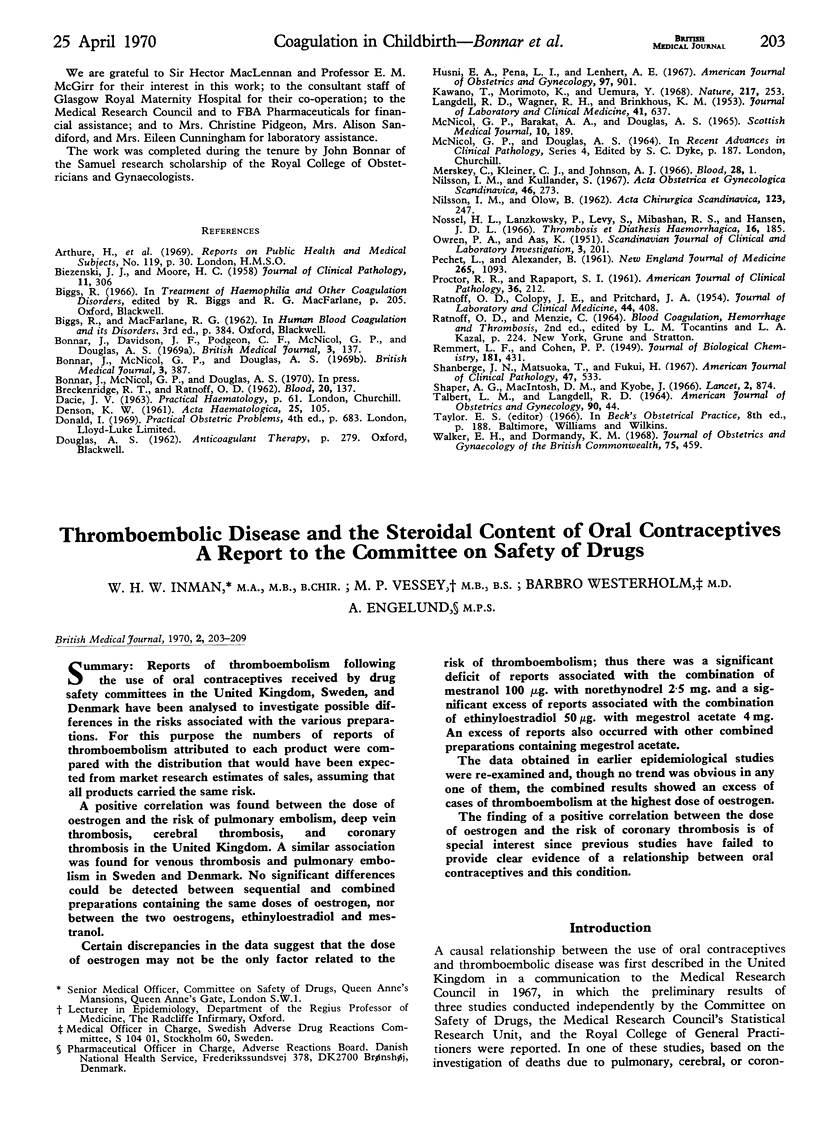
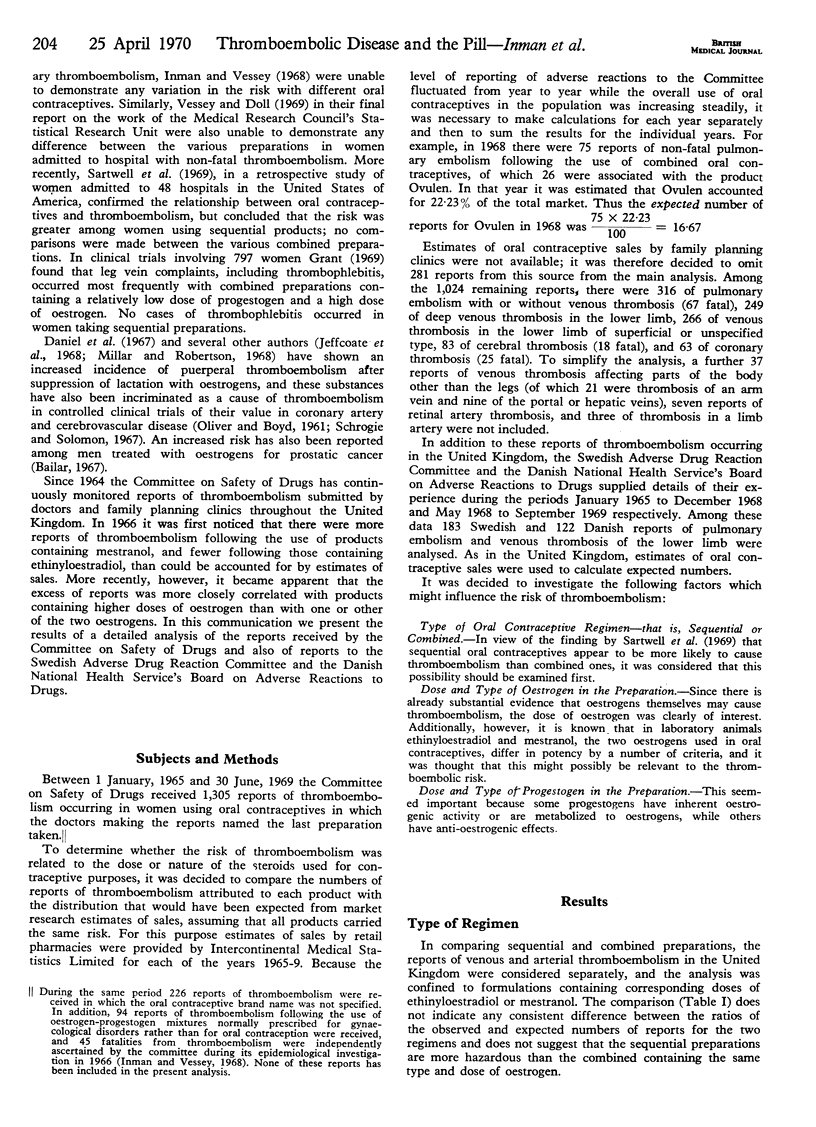
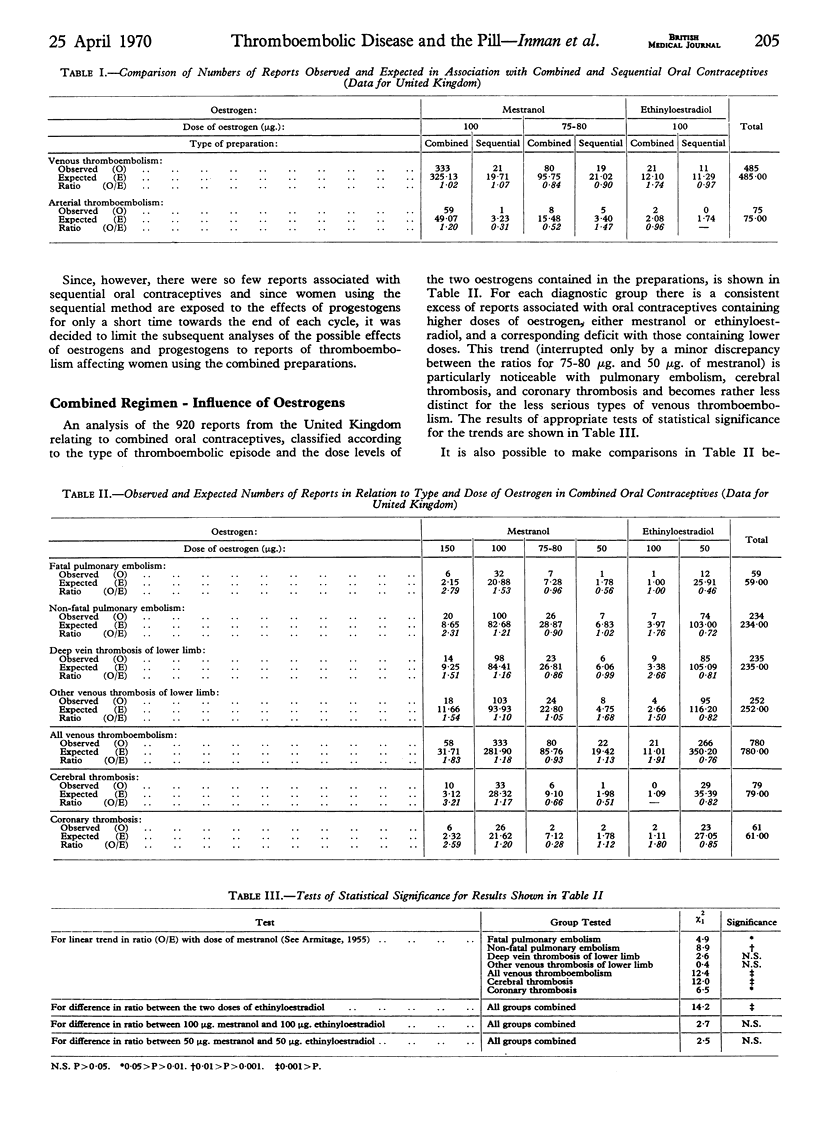
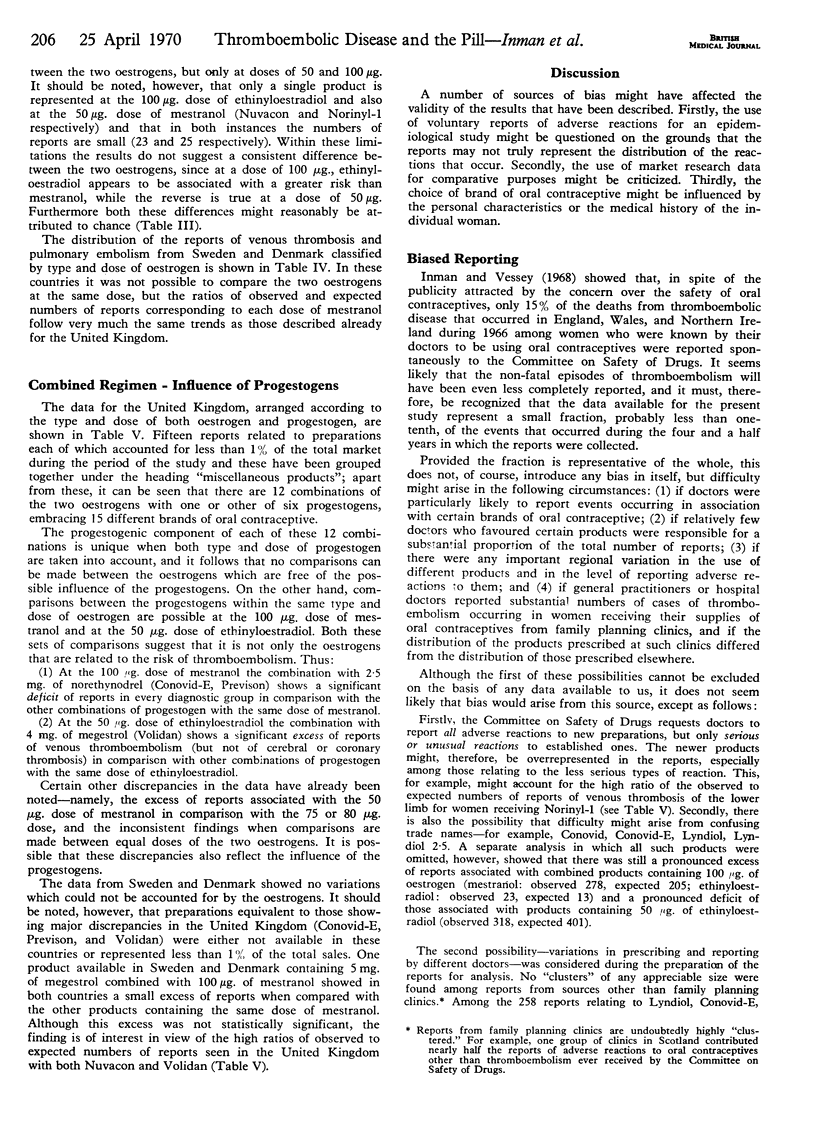
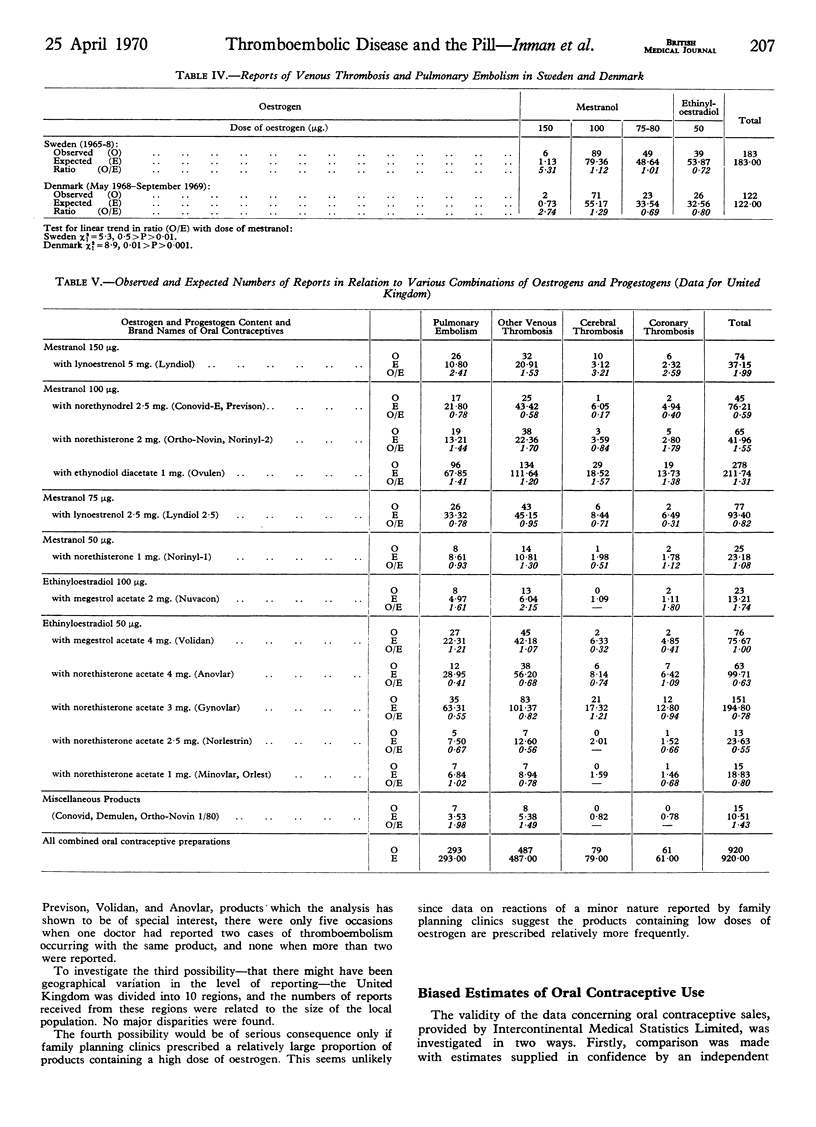
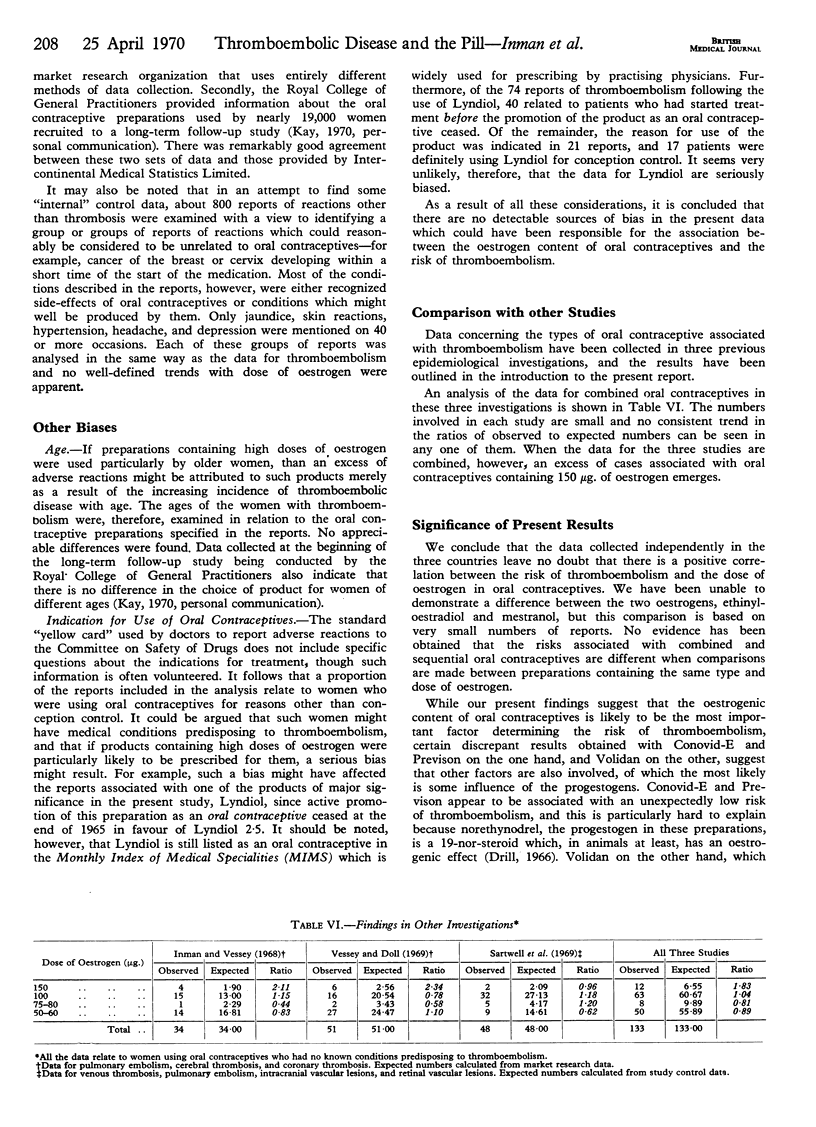
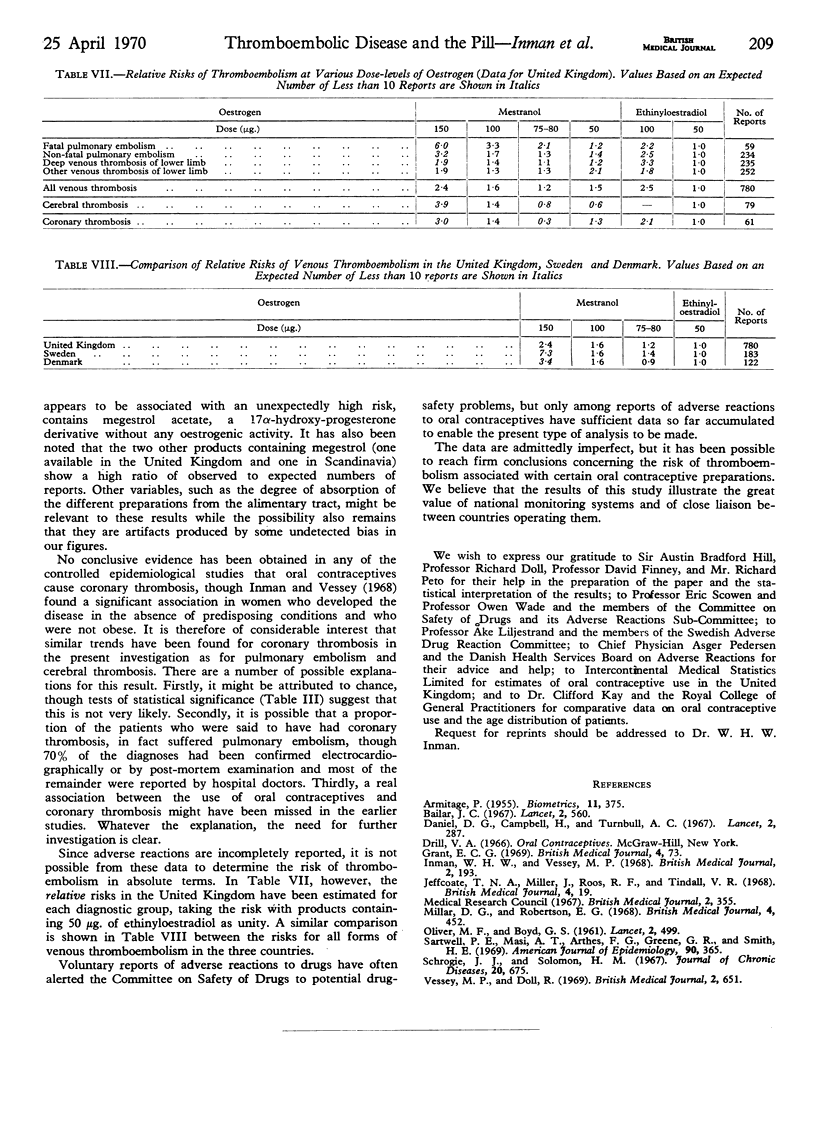
Selected References
These references are in PubMed. This may not be the complete list of references from this article.
- Bailar J. C., 3rd Thromboembolism and oestrogen therapy. Lancet. 1967 Sep 9;2(7515):560–560. doi: 10.1016/s0140-6736(67)90529-6. [DOI] [PubMed] [Google Scholar]
- Daniel D. G., Campbell H., Turnbull A. C. Puerperal thromboembolism and suppression of lactation. Lancet. 1967 Aug 5;2(7510):287–289. doi: 10.1016/s0140-6736(67)90117-1. [DOI] [PubMed] [Google Scholar]
- Grant E. C. Venous effects of oral contraceptives. Br Med J. 1969 Oct 11;4(5675):73–77. doi: 10.1136/bmj.4.5675.73. [DOI] [PMC free article] [PubMed] [Google Scholar]
- Inman W. H., Vessey M. P. Investigation of deaths from pulmonary, coronary, and cerebral thrombosis and embolism in women of child-bearing age. Br Med J. 1968 Apr 27;2(5599):193–199. doi: 10.1136/bmj.2.5599.193. [DOI] [PMC free article] [PubMed] [Google Scholar]
- Jeffcoate T. N., Miller J., Roos R. F., Tindall V. R. Puerperal thromboembolism in relation to the inhibition of lactation by oestrogen therapy. Br Med J. 1968 Oct 5;4(5622):19–25. doi: 10.1136/bmj.4.5622.19. [DOI] [PMC free article] [PubMed] [Google Scholar]
- Millar D. G., Robertson E. G. Puerperal thromboembolism. Br Med J. 1968 Nov 16;4(5628):452–452. doi: 10.1136/bmj.4.5628.452. [DOI] [PMC free article] [PubMed] [Google Scholar]
- OLIVER M. F., BOYD G. S. Influence of reduction of serum lipids on prognosis of coronary heart-disease. A five-year study using oestrogen. Lancet. 1961 Sep 2;2(7201):499–505. doi: 10.1016/s0140-6736(61)92951-8. [DOI] [PubMed] [Google Scholar]
- Sartwell P. E., Masi A. T., Arthes F. G., Greene G. R., Smith H. E. Thromboembolism and oral contraceptives: an epidemiologic case-control study. Am J Epidemiol. 1969 Nov;90(5):365–380. doi: 10.1093/oxfordjournals.aje.a121082. [DOI] [PubMed] [Google Scholar]


